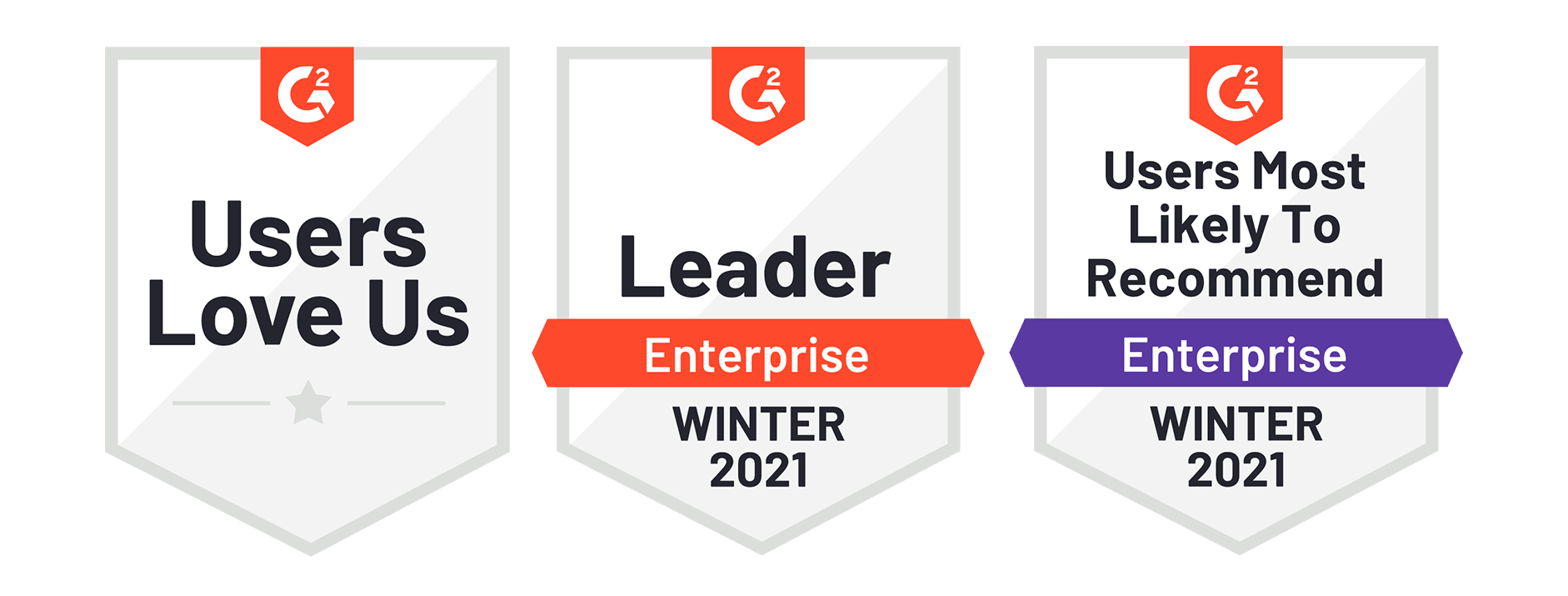Are the people in your organization equipped with the tools they need to get their work done efficiently, effectively, with minimal roadblocks, and maybe—just maybe—have fun while doing so? This is not a distant reality.
2021 will be the year for IT professionals to step up and play a major role in driving organizational success by helping employees thrive despite the challenges presented by distributed work. And the “how” is fairly simple: IT leaders who are open to insights and feedback will drive a more collaborative IT strategy that can actually improve productivity, engagement, and prevent shadow IT.
Easier said than done, right? We get it. That’s why we’ve enlisted some really smart people to help. Earlier this month we brought together a few top IT professionals for our How IT Leaders Can Be More Customer Centric in 2021 webinar. Leaders from Guidewire, Dolby, and FINRA shared best practices for meeting their team’s needs with online collaboration software while maintaining security standards. We’ve put together the top five insights from their experiences to set you up for success this year.
Stephanie is a writer, dog lover, and self-proclaimed foodie. She believes humor, ingenuity, and honesty are the keys to creating connection. Stephanie currently lives, listens, and creates in Austin, TX with her husband Sean and dog Penny.
1. Be adaptive and responsive to change
A critical first step to responsiveness is understanding your employees. Leaders need a combination of empathy, intentionality, and partnership to ensure employee needs are being met, thereby paving the way for adoption of new tools or processes. Otherwise, that shiny new collaboration tool you’ve got? DOA.
Chon Intakeha who serves as Director, PMO – Business Technology at Guidewire, administered a survey gauging employees’ needs—asking questions about what they used to be able to do versus what they can do today. Taking this information into consideration helped Guidewire identify which online collaboration tool would best suit their needs. At FINRA, Myra Freilich found herself looking for a solution that would meet the needs of her team’s most common request.

The thing that we heard over and over again was, ‘how do I get my people around a whiteboard?’

As FINRA’s Associate Director, Myra knew it was her job to find a way to help her team innovate at the same level they did in the office, mimicking interactions like brainstorming sessions and idea-sparking hallway conversations. She knew this required a different kind of tool that allowed people to meet in one virtual space.
And for Director of Infrastructure Curt Hodge, a bit of internal research showed that there were pockets of teams at Dolby already using Miro, which led him to test and eventually implement the solution across the enterprise. For Curt, customer centricity was key.

We don’t want to be one of those companies to just say, ‘Hey, this is what we’re using. Good luck …’ Dolby doesn’t have that kind of culture … so really getting that buy in before we decided to select it is all part of the process for us.

Learn more about Miro
2. Pick collaboration tools that meet your team where they are
Aside from listening to your teams and considering the tools they already use and love (like Curt did), it’s critical to ensure a new implementation won’t disrupt processes that are already in place or work that is in progress.
For FINRA, that meant strengthening the security of any integration points to ensure the copacetic usage of a tool like Miro in conjunction with existing toolsets. These integrations are also key for productivity. Having to juggle work between multiple tools is very disruptive and reduces effectiveness. According to IDC, teams who use three or more integrations experience significantly more time savings (over 30 hours per week).
For Dolby, disruption needed to be considered on a global scale—with offices in China and India, Curt needed to make sure work would be continuous even in locations where connectivity might not be as strong.
We really had to look hard at solutions that performed well over a really big network—especially if someone was on a wifi network connection at home.

As a company of engineers that strive for quality in audio and video, it was paramount to find a collaborative tool for Dolby that was high performant and scalable.
Explore 70+ apps
and integrations
3. Think about tools that will work today and tomorrow
Distributed work is not going away any time soon. Some companies will continue to work remotely or implement a hybrid approach to office life. But even for those who return to offices, there will still be a need to collaborate with people in different locations or time zones. Implementing a solution that suits your needs for the long-term will be critical not only to business success but also for employee productivity and contentment.

[Miro] has been such an important investment in their time, their energy, their resources and is yielding some significant efficiencies for how they do business.

Even prior to 2020, it was clear that true co-location was becoming a thing of the past as organizations re-invent their collaboration strategy and office culture. Many are beginning to shift their focus to a hybrid or fully remote model. Finding the right software for enterprise collaboration is critical to achieving smooth operations regardless of location.
4. Tailor rollout to make adoption easy (and fun)
New product rollouts are hard enough when you’re in person. But virtual onboarding brings a whole new set of challenges (and resistance). Luckily there are ways to make roll out and adoption easier for your teams. Involving all of your stakeholders in the pilot is always a good first step to get buy-in. But what can really kick it up a notch is taking time with teams on an individual level to drum up interest and excitement.

I think the thing that really worked for us even after engaging the operations teams was going to a vice president of a certain business group and sitting with his staff and making sure they understood what it was and how it could work for them.

It’s also crucial to ensure you are prepared to demonstrate the specific value for each use case—be it customer journey mapping for marketing or headcount planning for HR. For Myra, there was certain value in making sure the selected tool was beneficial to each and every user. Her team at FINRA took the time to provide training targeted at specific user communities and found that being able to speak in each teams’ language made a big difference.
5. Make scaling up seamless
When you’re moving at full speed to meet deadlines, produce results, and respond to client needs, you don’t have time to get a long list of approvals and follow a complex process for adding licenses to your collaboration tools. When you need to bring together cross-functional teammates to do a quick brainstorm, or your client needs a last-minute workshop for 100 people instead of 10, your job is to enable, not stifle.
Another reason you need flexible scaling capabilities is when you’re simply unsure how many licenses you’re going to need. While you might be confident your design and agile teams will adopt this new collaboration tool, you have no way to gauge who else might incorporate it into their team strategy.
With Miro’s Flexible Licensing Program, you are granted unlimited licenses for your team—without the worry, hassle, and wait of traditional enterprise subscriptions. The end goal we are all working toward is continuous, uninterrupted teamwork, no matter where your teams are—and that means scaling when and where you need to.

We didn’t know how many groups were going to jump on, and just having that flexibility was key. It was hard for us to budget in advance in terms of how many licenses we need.

The word “collaboration” can mean something different to anyone you ask. The key is to understand your audience and what they need in order to get work done and make it easy for them to do just that.
If you are looking for more details on how the IT professionals quoted here implemented Miro, achieved adoption goals, and maintained security protocols, you can watch the webinar replay or contact us to learn more.
Talk to us about our new Flexible Licensing Program







